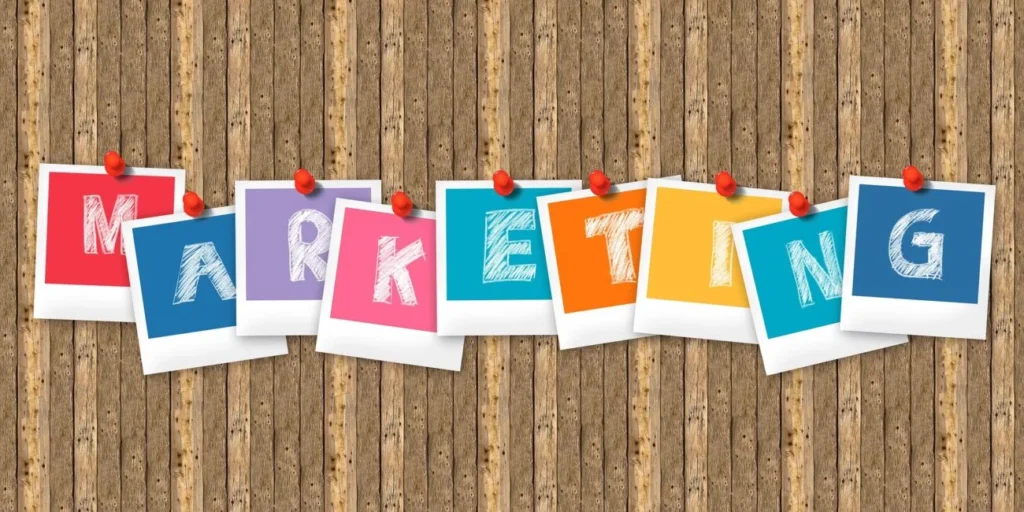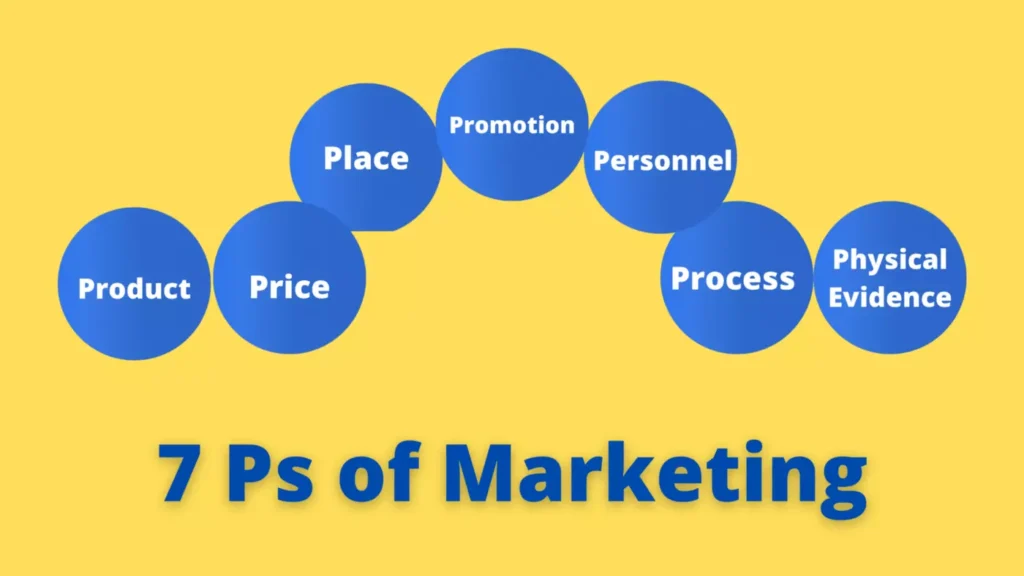Define Term Marketing and What’s its Purpose?
Looking for a single definition of marketing is like finding a needle in a haystack. Many think of it as advertising and selling a product to earn profits. Yet, the term marketing involves a lot more than just earning revenue from sales.
A dozen restaurants near you can have a million times better food than Mcdonald’s at roughly the same price. But no one gets better customers like Mcdonald’s. Why is it so? It’s the power of marketing strategies. Every business that’s up and running needs someone to take care of it.
Let’s understand everything about marketing in this article and find out why you need it for your business.
Marketing–What Does it Mean?

It is all about communicating, convincing, and making people believe in an idea. The important thing is that your idea should contain some value.
In other words, it is the art of providing value to your customers through product/service awareness and making them believe in it so that they buy it.
It requires researching your customer’s pain points, analyzing the market landscape, advertising your products, making your customers aware of the USPs, branding your business, and selling the products.
Background of Marketing
The informal marketing history is as old as we can peek into human civilization. It all started with primitive buying and selling through the barter system.
Our focus is to see how it evolved into a discipline. From Gutenberg, who developed the printing press, to Tom Bernays, to passing David Ogilvy, and coming to the present digital era, the marketing timeline is full of interesting facts.
Whether you dive into the industrial revolution– an era of mass production- or enter the digital landscape, you will find one peculiar thing. The marketing medium kept changing, yet the core idea of sale remained the same.
In the 1900s, industries began to grow, resulting in mass production. As many people came into the market, it became saturated.
In the past, it was easy for an ordinary buyer to decide where to buy a product or service. As many people hopped into a single niche, competition increased. That’s why businesses find it hard to sell their products. Even if you want to launch something new, you must first find its place in the market.
Thanks to the intense competition, marketers brainstormed new ways to bring customers on board and sell their products.
Let's Understand with Examples
The “Torches of Freedom” slogan is an epic example of how marketing was done to elicit behavioral change.
Women, before 1989, didn’t smoke cigarettes. Tom Bernays made an out-of-the-box campaign that combined the emotional appeal of freedom and showed that women would become bold and brave by smoking.
Now, you see from this example that marketing wasn’t meant to sell. Rather it also created demand in a new market space. People can’t forget some of the ads written in newspapers and later the digital media. Copywriters like David Ogilvy churned a bunch of sales copy as enticing and magnificent as to remain in people’s memories.
Marketers at that time grasped the skill of persuasion and learned how to appeal to the customer’s psyche. A Roles Royce advertisement written at that time is the perfect case in point.
This discipline has seen a mushroom growth, sprouting into a long list of sub-disciplines and types. Nevertheless, the core idea of marketing anything remains the same.
Types of Marketing
Now that you have gone through how it evolved, it’s time to see what types of marketing are relevant today. As we see, after a turn of a few years, some mediums and techniques went outdated creating space for new ones. The greatest lie ever told to an entrepreneur was “build a better mousetrap, and they will beat a path to your door.” They won’t.
That’s how marketing works nowadays. To market your products, you need to define which type of audience you want to target and where your audience spends their time.
So, it implies that market research decides the type of marketing you want to do. Below are some of the most common types that are up and running nowadays.
TV and digital are two major channels right now. However, TV isn’t much focused, but still relevant.

-
TV Marketing
In 2021, TV was the second most popular medium after digital, amounting to one-fifth of total revenue spent on marketing in the USA.
It is the type of marketing in which a brand creates its promotion campaign with the help of visuals. Usually, a TV commercial is of a small length and isn’t intended to create a sale.
Rather, it’s made to spread awareness to the public or to endorse the brand.
-
Digital Marketing
If marketing is a wheel, then digital marketing is its axle. It’s the type of marketing most used today.
The digital landscape includes many subtypes, and each subtype has its market research techniques and audience requirements.
Let’s take a deeper dive into it now.
Search Engines are gold mines to find your customers. Marketing for search engines is like catching fish at a river’s bank. To get the plentiful only if you place the net correctly.
There are two popular ways to market your products or services on search engines. Either you can use organic ways to show your products or services to the customers, or you can run paid campaigns on websites called PPC or SEM.
SEO is all about creating high-quality content that ranks on search engines. Later, you can market your products or services on ranked websites to get customers.
Social media is a holy grail for marketers. It contains all the social media websites like Facebook and Instagram people use to connect. These apps allow businesses to create pages for sharing their business and grab like-minded people’s attention.
These stats will blow your mind. Last year, Facebook earned $115 billion from ads. So, it’s becoming the most popular medium of marketing soon.
With that in mind, businesses are moving towards e-commerce and honing ad campaigns on different social platforms.
-
Affiliate Marketing
Another trending type of marketing is through affiliate links. Suppose you have a blog with moderate traffic; you can turn it into a passive source of income with affiliate marketing.
Businesses worldwide look for popular blogs in their niche– those who write about the same kind of stuff they intend to sell.
On each sale, you get a fraction of the sale money. However, it requires planning the content strategy and creating content promoting the brand product.
Purpose of Marketing

Marketing is all about communicating something for the sake of persuasion. In the case of a product-based business, you are communicating the value of your product. It’s like you know something valuable and wants the ideal person to know about it. So, he may enrich his life with that product.
Now listen. Why does a business exist? It exists to create customers. What makes people become customers of a company? Because they believe the business will provide them more than they pay? And how do they come to believe it? Through communication, they believe in the value of the product.
So, we can say that marketing aims to communicate the product’s value and ensure the business sells its products and retains customers. Business and marketing serve each other’s purpose. In the corporate sector, where big businesses and small startups keep competing, we need to find the objectives of marketing.
There are major objectives behind every marketing campaign. Let’s find them out one by one.
-
Customer Leads
You can’t sell anything to anyone. If a marketer sells ice to Eskimos, people will say he has excellent marketing skills. But it’s useless and a dumb idea to sell ice to Eskimos.
Therefore, you always need to grab the interest of those already interested in such products. So, the major marketing objective is to make people aware of your business and change them into leads.
Once they enter the buyer’s journey, you can sympathize with them to get the ideal customer. For instance, email marketing brings 6 times more responses than all other marketing types because it communicates directly with the customer.
-
Retain Customers
Retaining old customers mean saving 5 times the amount spent on new customers. Although customer acquisition plays a major role in calling a business, customer retention is what brings new customers to your company.
Marketing successfully means keeping the old customers satisfied with your products. Branding also helps you in this matter.
If you have an exceptional product, but your brand is somewhat obscure, you won’t get all of your first customers back. Therefore, it’s necessary to market your brand and keep your quality consistent with bringing back your customers.
-
Improve Customer Relationship
Building a rapport with your customers is vital in marketing. Moreover, the customer relationship defines how your business will grow in the coming years.
Companies that provide good customer care get more customers. Because happy customers mean good business, so it improves customer retention and returns customers.
So the overall objective of marketing is to keep the inflow of customers to generate revenue.
What are the 7 Ps of Marketing?
Back in the days of Mad Men, creating a marketing strategy was way different than today. Initially, the marketing mix included the 4 Ps, the yardstick of successful marketing. Later, with the evolution of the business landscape, 3 more Ps were added to the overall strategy.
For every aspiring marketer, it is more than necessary to hone these Ps of marketing, as they help you find whether you are on the right path to achieve your business.
These 7Ps are Product, Price, Promotion, Place, People, Process, and Physical Evidence. Let’s discuss each of them.

1. Product
Marketing starts with the idea that your product is the best among competitors. In marketing, what you sell is more important than how you sell.
After all, the product brings in a continuous inflow of customers. How can you make people believe in your product if you don’t know what problems it solves? That’s why you should understand what it is, its features, and how it benefits the end users.
Not all customers are equal. They are at different stages of their buyer’s journey and have different problems. It’s about finding a unique selling point that addresses each customer’s core issue.
Later, you can employ different campaigns such as blog posts, social media ads, affiliate content, and influencer marketing to reveal your product to your customers.
2. Price
The role of pricing your product is very delicate for your customers. For instance, you might have a perfect product that’s worth earning a million dollars. You leave no stone unturned to do your marketing up to the mark, but your product doesn’t give you a breakthrough. Why is it so?
Probably, your price is so high than the competitors that your customers can’t afford it, or they think you are overcharging. Similarly, low pricing can also leave you behind a competitive advantage.
So what is the ideal case?
You must draw a fine line between your markup profit and the competitive market price. It would be best if you kept your prices flexible for the market. There must be a room where price change does not affect the customer base. You may even add additional free offers with your product if you think the original product will overwhelm the audience.
Similarly, you can flip this strategy to upsell them. For example, initially, customers come to you to get french fries, but with time, you sell them french fries-making accessories.
In addition, you may also divide your price over a few months. It may not give you a lump sum, but you may earn more in the long run by increasing your interests.
In short, you should revisit the price structure and make appropriate changes according to the market.
3. Promotion
Promotion is the real meat of marketing. It’s that part where people like Don Draper of Mad Men sit down to brainstorm ideas and develop the whole sales funnel.
Once you have researched your audience, gathered their pain points, and searched for promotional platforms, the next thing is to create ads, VSLs, emails, newsletters, sales letters, and brochures to tell people about your product.
Sometimes, you may promote your product just to aware your customers. Sometimes, you can help sell them the product directly. To keep your promotions game up, you need to hire experienced copywriters who can increase the response rates through enticing headlines.
Now, people hire digital marketers to design campaigns and sales funnels for lead generation and sales conversion.
These techniques are relevant in today’s world, but they won’t stay forever. Therefore, you must keep updating new marketing techniques to stay ahead of your competitors.
4. Place
Your audience is at a different level in their buying journey. Some will be problem aware; others will be solution aware. There will be some people aware of the product.
To convert them into sale prospects, you need to market your products at their level of awareness. Therefore, where your customers are very important in the marketing landscape.
For instance, your customers are suffering from obesity, and you sell the solution for it. If problem-aware, they may roam in Facebook groups, Subreddits, Quora, or blog posts. So, you need to be aware of your products at that place. Similarly, some may know you and what you are selling. You can market your products right in their email box by sending them emails.
Those who know your brand may visit your office or physical shop. They may even know your store on e-commerce websites such as Shopify, Amazon, e.t.c.
5. People
People are the fine pieces of your marketing puzzle, and you can’t imagine your goals without them. Managing people is all about hiring the right staff for each department involved in promotion, sales, and marketing. For instance, Your delivery staff messed up your supply chain by sending the wrong product.
The angry customer calls for a refund but gets cooled down by the customer care agent as he apologized first and told him that the order would be replaced.
That’s how your marketing staff works. It should be focused on generating sales. Therefore, it’s important that everyone in your team, even the chat support, must be aware of your product and be adept at showcasing its features to the customers.
6. Process
Though the process isn’t directly related to promotion but has an indirect impact on your sales. The process starts with an idea of the product, to the factory’s conveyor belts, to packaging, and ends up at your customer’s door.
All of these small processes must be in line with your brand voice and your marketing. Any product’s quality or supply chain drawback can disrupt it, and you may lose your customers.
7. Physical Evidence
People are well aware of your company’s credibility. They might have got scammed or have seen people who get scammed.
Therefore, they shy away from buying anything if they smell something fishy. To develop trust, you must show your prospective buyers some physical evidence. It may be your physical address, website, online store, or anything that makes your company credible.
Final Words
Marketing cannot be defined in a few words as it encompasses every aspect of a business. However, we can say that it’s the art of getting people interested in your products or services. There is a lot more that goes into it. If you are new in this field, you need to know the purpose of marketing.
Nowadays, it serves multi-purpose. It sells products, increases business profits, and makes your product stand out. The overall marketing mix involves 7 Ps that you must know if you are running a business or aspiring to become an entrepreneur.
